Are you a senior and on a low sodium diet? Are you interested in delicious, heart-friendly dishes that not only burst with flavor, but also promote your well-being?
If so, look no further. Here is the ultimate list of easy low sodium meals for seniors!
Remember, a low-sodium diet doesn’t have to mean low flavor. Keep reading to learn how to reduce your sodium content with tasty dishes and low-sodium meals.
Top Takeaways
- Seniors on low-sodium diets can enjoy flavorful and heart-friendly meals with the help of this guide.
- Excess sodium intake can lead to health issues like high blood pressure and osteoporosis, making it crucial for seniors to watch their sodium intake.
- Tips for reducing sodium intake include reading nutrition labels, cooking at home, using herbs and spices for flavor, choosing low-sodium snacks, and checking condiment labels.
- This article provides low-sodium meal ideas for breakfast, lunch, dinner, and snacks, as well as tips for dining out and incorporating potassium-rich foods into the diet to complement a low-sodium lifestyle.
Understanding Sodium and its Impact on Health
According to the National Institutes of Health, sodium is an essential nutrient that, when eaten in large amounts, increases the risk of stroke and heart disease (1). It is commonly found in table salt (the salt shaker), also known as sodium chloride, as well as other condiments, packaged foods, fast food and frozen meals.
How Much Sodium
The average American consumes approximately 3,400 mg of sodium per day (roughly 1 1⁄2 teaspoons) (2). In reality, the federal dietary guidelines recommend no more than 2,300 milligrams of sodium per day (around 1 teaspoon of salt).
However, the ideal daily limit recommended for adults living with heart disease or want to reduce their risk of heart disease is 2000 mg according to the American Heart Association.
Excess intake of sodium can lead to persistent high blood pressure, which can cause heart attack, strokes, and other issues like PAD, heart failure or stents.
Within 30 minutes of consuming excess salt, the blood vessels in the body are impacted. These blood vessels’ ability to dilate is reduced, causing an increase in blood pressure which is also referred to as hypertension.
Over time, this uncontrolled high blood pressure can impact the kidneys as the arteries around the kidneys are damaged, impacting their ability to excrete salt properly. As a result, this may cause further issues, such as swollen ankles and fluid build-up around vital organs such as the lungs and heart.
By cutting back on salt intake, blood pressure may lower in a matter of weeks. In fact, reducing salt intake by 6g (one teaspoon) per day reduces the risk of stroke by around 24%, and cardiovascular disease by 18% (3).
In the senior population, there is also the risk of developing osteoporosis, which is when bone mass decreases and causes bones to break more easily. This disease has been associated with a high salt consumption, as is hypercalciuria, which is excess calcium loss in the urine.
When sodium intake is high, the body gets rid of it through the urine, taking calcium with it. This loss of calcium weakens the bone, leading to greater risks of fractures. So be sure to also check out our calcium rich smoothie.
Seniors and Sodium
Older adults are particularly susceptible to consuming excess amounts of salt.
When age progresses, cooking may become overwhelming or more difficult to accomplish for individuals. As a result, purchasing fast food may be of more convenience.
However, as much as 75% of salt within the diet comes from processed and fast foods (4). As you can imagine, this takes a toll on the pressure of the arteries, or your blood pressure.
Additionally, with aging, the taste buds change, and the taste of salt tends to decrease, resulting in a chance of oversalting food and increasing salt intake.
Many older individuals may not realize the amount of salt that they are using when cooking, which may lead to risk factors. This change in taste tends to be more significant in women above the age of 50 than in men (5).
That’s why the below list of low sodium meals for seniors is a great resource to sustainably stick to a low sodium diet.
What Is A Low Sodium Diet
Salt is a crystal-like mineral that is found in nature, while sodium is one of the chemical elements found in salt. Sodium is the mineral that increases the pressure on your arteries, and therefore your blood pressure (6).
How To Start A Low Sodium Diet
Cutting down sodium intake may sound difficult, but there are many ways to reduce it! Before we get into the list of low sodium meals for seniors, here are some tips to lower your sodium intake and benefit your overall health:
1. Reading the Nutrition Facts label
Unsure of how to read a Nutrition Facts label? Keep reading to learn what to look for!
2. Reducing fast food consumption
Fast food is loaded with salt. By reducing fast food intake, you would also be reducing the amount of salt consumed.
3. Prepare your own food
Making meals at home using whole foods is a great way to reduce your sodium. By limiting pre-made sauces and “instant” food-items, you can improve your health. For instance, foods such as instant noodles can have as much as 1,200 mg of sodium!
But don’t worry, preparing food at home doesn’t have to be labor intensive or time consuming. Read on for some easy recipes.
4. Add flavor without using sodium
Salt is one way to add flavor, but another great way is to add fresh or dried herbs and spices to enhance your meal.
5. Choose lower sodium snacks
Pick low sodium or unsalted snacks such as nuts, seeds, pretzels, or these low sodium snack ideas listed here.
Whole foods like fresh fruits and vegetables provide a tasty alternative as well that are naturally low in sodium. Snacks from the DASH diet will also help manage blood pressure.
6. Check your condiments
Certain sauces and condiments include high amounts of sodium. Be sure to check the label, and choose ones that have “no sodium added” or “low sodium” labels on the front of the package.
Additionally, instead of pre-made sauces, consider oil or vinegar for your salads or these low sodium sauce recipes.
Finally, if you decide to use sauces and condiments, watch the serving sizes! Use only a small amount rather than the entire package.

Low Sodium Shopping Advice
When choosing food products for the low sodium meals for seniors, it is important to purchase low sodium options at the grocery store. Here are eight tips to make it easier.
Tip 1: How to read and understand food labels
When reading food labels to identify how much sodium is in a product, you need to look at three places
| Serving Size: This tells you the amount of food the nutrition facts table is based on. |
| Sodium: This tells you the amount of sodium levels in a food item, according to the listed serving size. Try to keep sodium to less than 140 mg per serving for true low sodium options. |
| Percent Daily Value or %DV: This is the column that tells you how much of a nutrient contributes to your total intake for the day. For low sodium options, try to choose foods that have 5% DV of less per serving. |
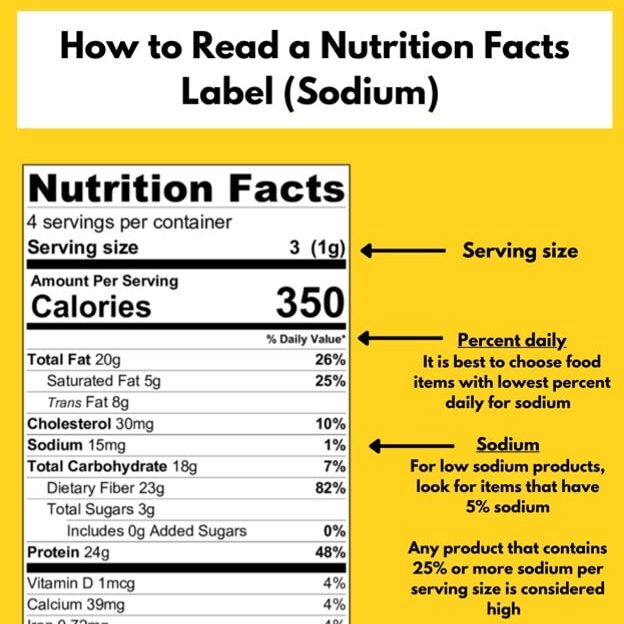
Tip 2: Identifying hidden sources of sodium on ingredient list
Another spot to look to identify if a product is high in sodium, is the ingredient list. Sodium is not only found in salt, but also other preservatives like monosodium glutamate, sodium nitrate, and sodium phosphate. If you see these ingredients on the ingredient list, the food product may be high in sodium.
Tip 3: Front of package messages
There are a few front of package labels or terms that can help you choose low sodium products.
“Sodium-free” means that the product has less than 5 mg of sodium per serving
“Low sodium” means that the product has 140 mg or less of sodium per serving
“Reduced sodium” can be put on a package if the sodium level in the product has been reduced by 25% per serving form their original product
Tip 4: Choose Fresh foods
Choosing fresh whole foods that are not packaged, like fruits, vegetables, whole grains and fish, are a great addition to a low sodium diet because they are naturally low in sodium.
Tip 5: Eat at home more often
Fast food has a lot of sodium. By cooking and eating meals at home, you can make healthy choices and significantly reduce your sodium intake.
If you need to eat out, check out low sodium subway options, and low sodium Burger King options or this article about how to eat out on a Mediterranean diet.
Tip 6: Grab low sodium cookbooks
Unsure of how to cook low sodium meals? Low sodium cookbooks can help. They offer tasty meals while also optimizing health. Can’t find any? Check out my top low sodium cookbook Or DASH diet cookbooks.
Or my recipes to lower blood pressure like these low sodium breakfast, low sodium lunch and low sodium dinner recipes.
Tip 7: Choose low sodium foods when eating out
Several fast food and restaurant meals have large amounts of sodium. To ensure that the food you pick has low sodium, consider making some tweaks to your order.
For example, rather than eating a salad with dressing, ask for oil and vinegar, or instead of eating French fries, consider eating baked potato instead.
Tip 8: Flavorful Alternatives to Salt
- Herbs: basil, rosemary, thyme, cilantro, etc.
- Spices: turmeric, cumin, paprika, black pepper, etc.
- Acids: lemon juice, vinegars.
- Umami boosters: mushrooms, tomatoes, nutritional yeast.
- Aromatics: garlic, onions, shallots, ginger, etc.

Easy Low Sodium Meals For Seniors
Here are some low-sodium recipes and low sodium meal plans to help you stick to your daily sodium intake and maintain a healthy diet.
Breakfast
1. Flaxseed Pudding
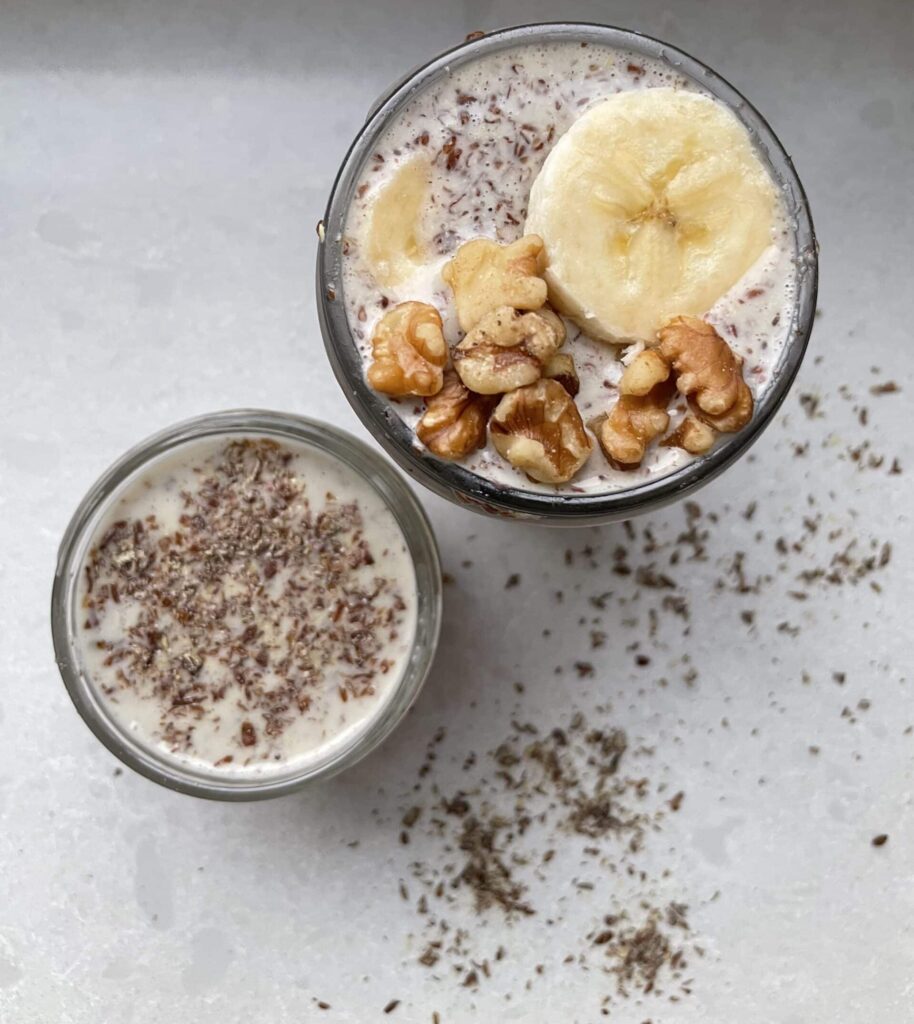
Flaxseed pudding is loaded with healthy fats and fiber, and doesn’t even need any kitchen tools to create. It’s a filling, nutritious, and cheap breakfast alternative that can help lower blood pressure.
2. Avocado Toast with Egg
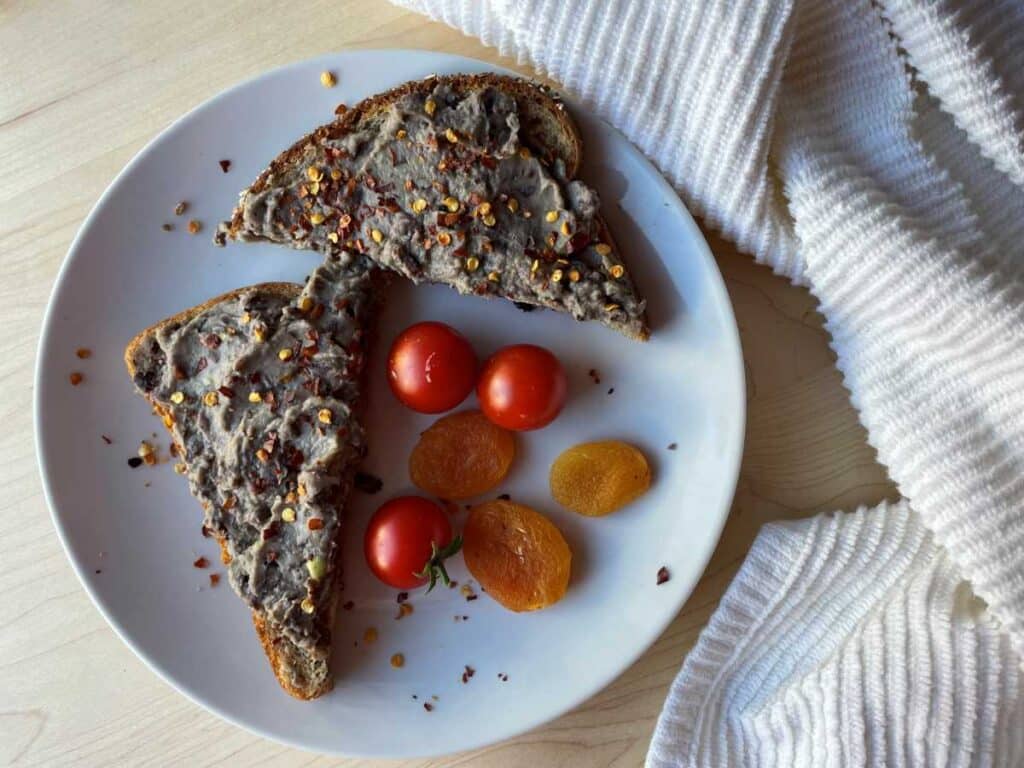
Is an easy low sodium meal for seniors, especially if you prefer a savory, filling breakfast. All you need is bread, avocados, eggs, spices, and 10 minutes to execute it. Or try this black bean toast with avocado as an alternative.
3. Low Sodium Pancakes
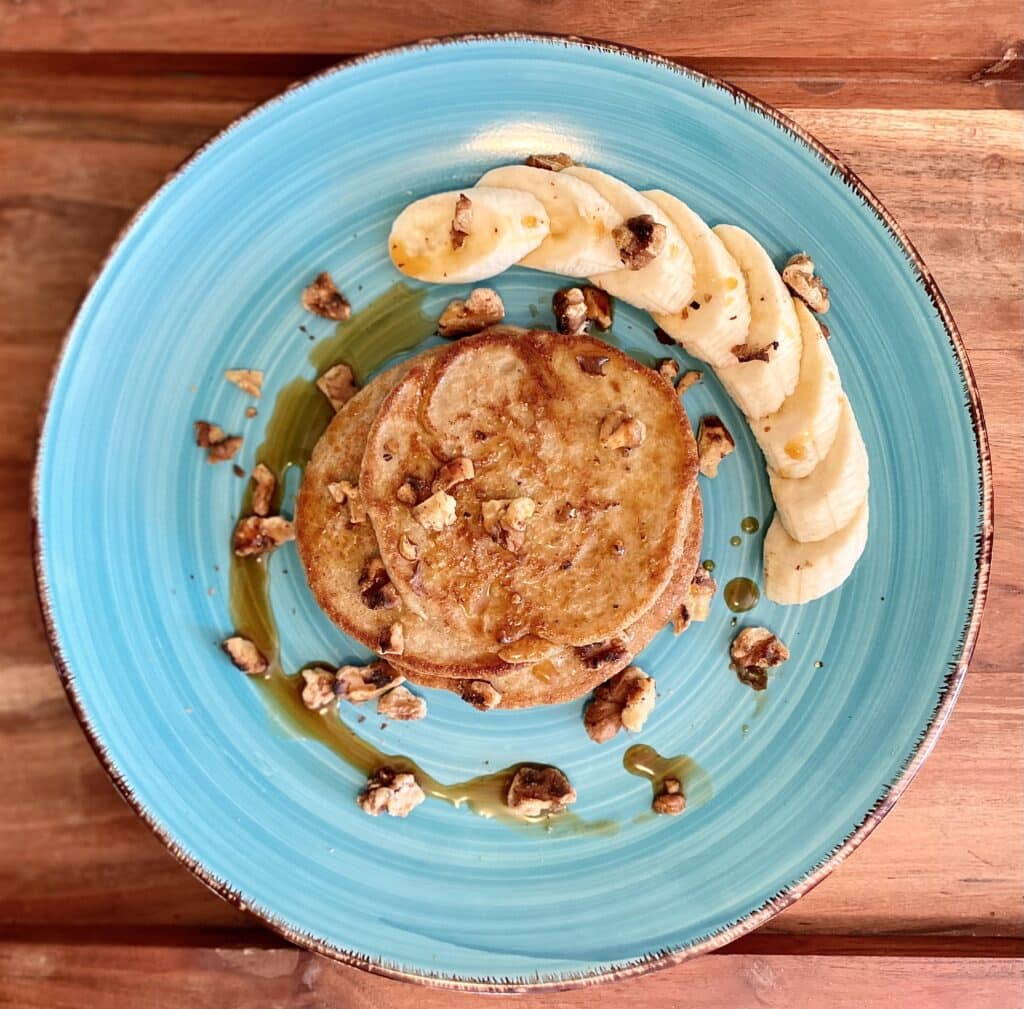
These low sodium pancakes only need 3-ingredients: bananas, oats, and milk.
It is egg-free, sugar-free, gluten-free, and vegan in addition to being well-balanced and great for your health.
Lunch
1. Tuna Melt Wrap
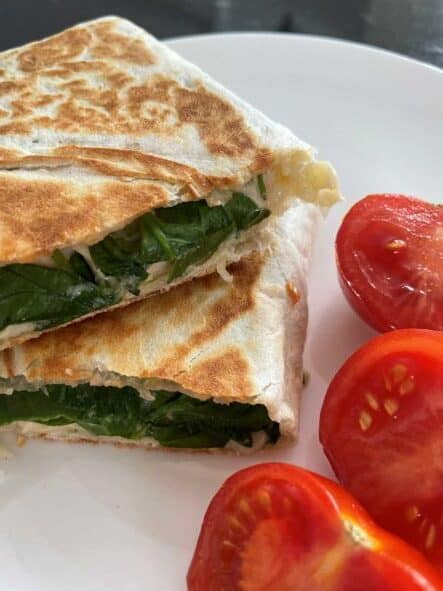
Enjoy this classic, easy to make low sodium meal for seniors. It is filled with anti-inflammatory fats. Or check out these alternatives to deli meats for more filling options.
2. Mediterranean Chickpea Quinoa Bowl
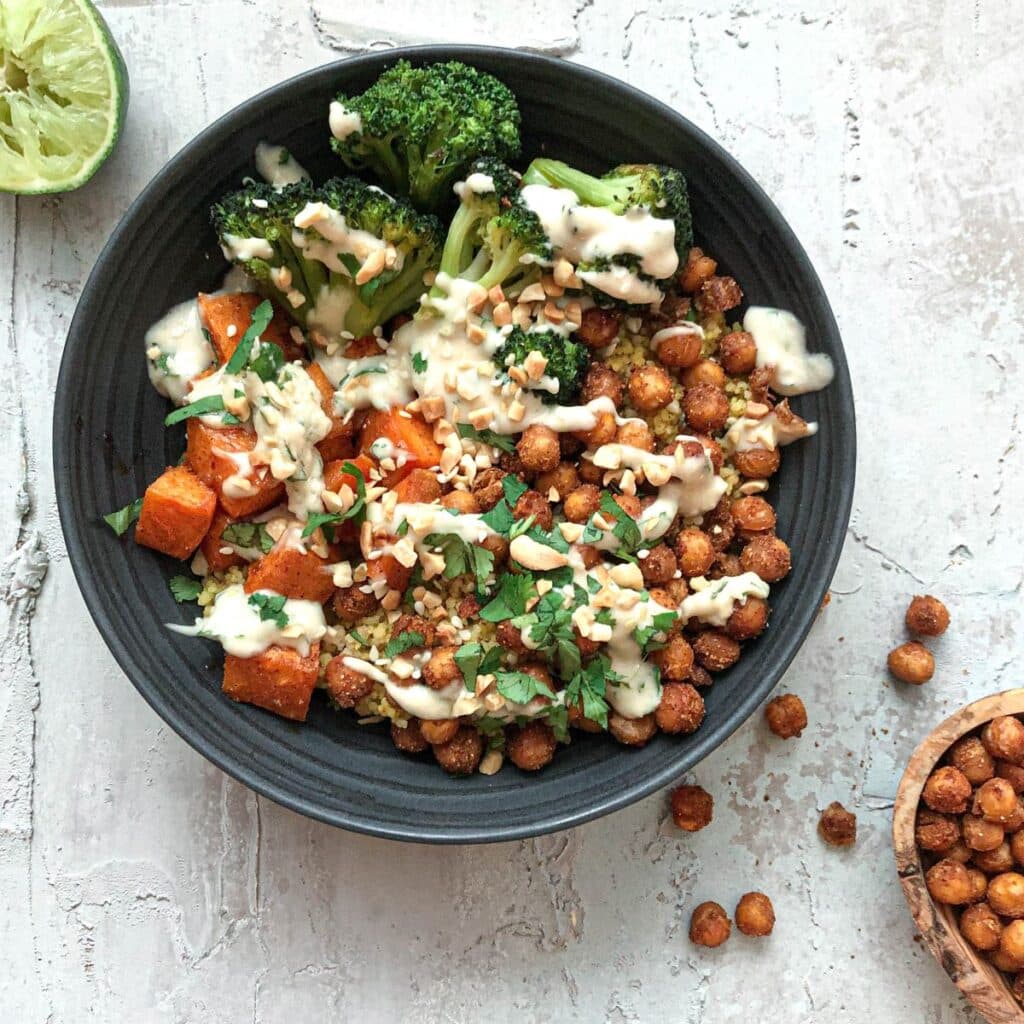
Want an easy to make low sodium meal for seniors that includes protein, fiber, and is healthy? If so, the Mediterranean chickpea quinoa bowl is perfect for you.
This dish has little prep and includes healthy nutrients that benefit the heart. Not to mention, it’s vegetarian!
3. Avocado Basil Pasta
Another easy to make low sodium meal for seniors. It is a fresh lunch that only takes 15 minutes to make.
The Avocado basil pasta is quick and tasty! Not to mention, it is gluten free, dairy free, and vegan.
4. Tomato Oatmeal Soup
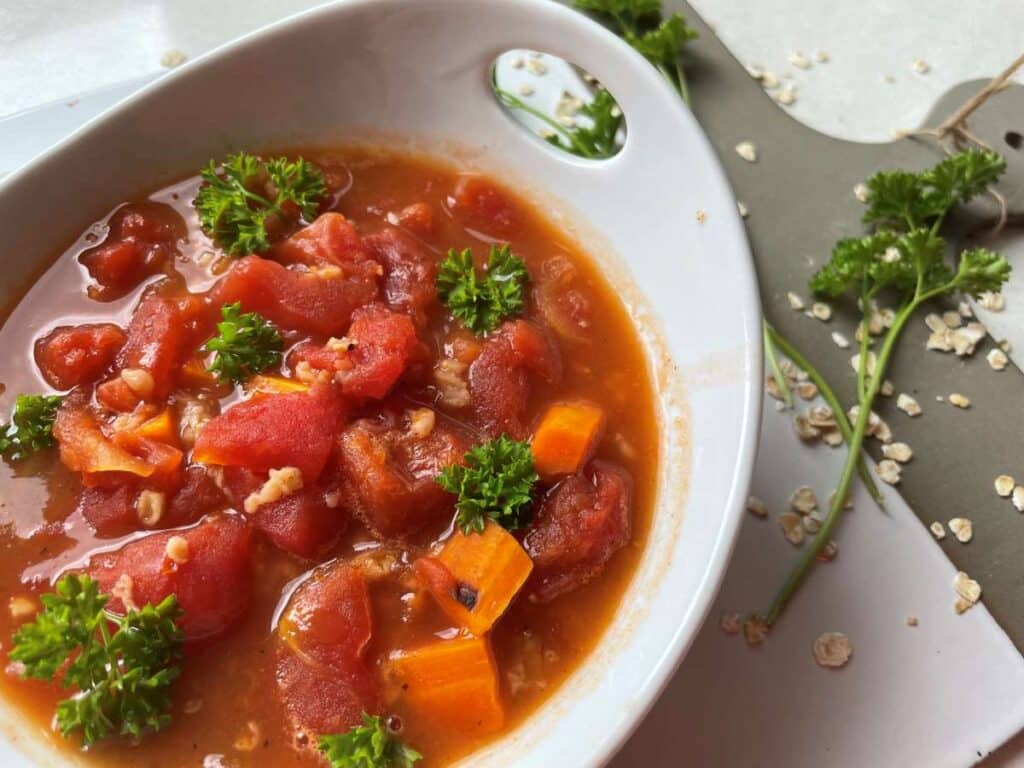
This easy low sodium meal for seniors is low in calories and keeps you full, while also lowering blood pressure and cholesterol!
Bonus – this meal is also a great way to control blood sugar and reduce your risk of diabetes too.
Dinner
1. Lemon Dill Salmon
Salmon is a heart-healthy dish with loads of omega-3 fatty acids that are essential for functions such as brain development and reducing inflammation.
Salmon is a naturally low-sodium food that benefits the body, and is also high in protein as an added bonus! This lemon dill salmon recipe is not only nutritious, but also quick and easy to prepare.
2. Instant Pot Chicken Stew
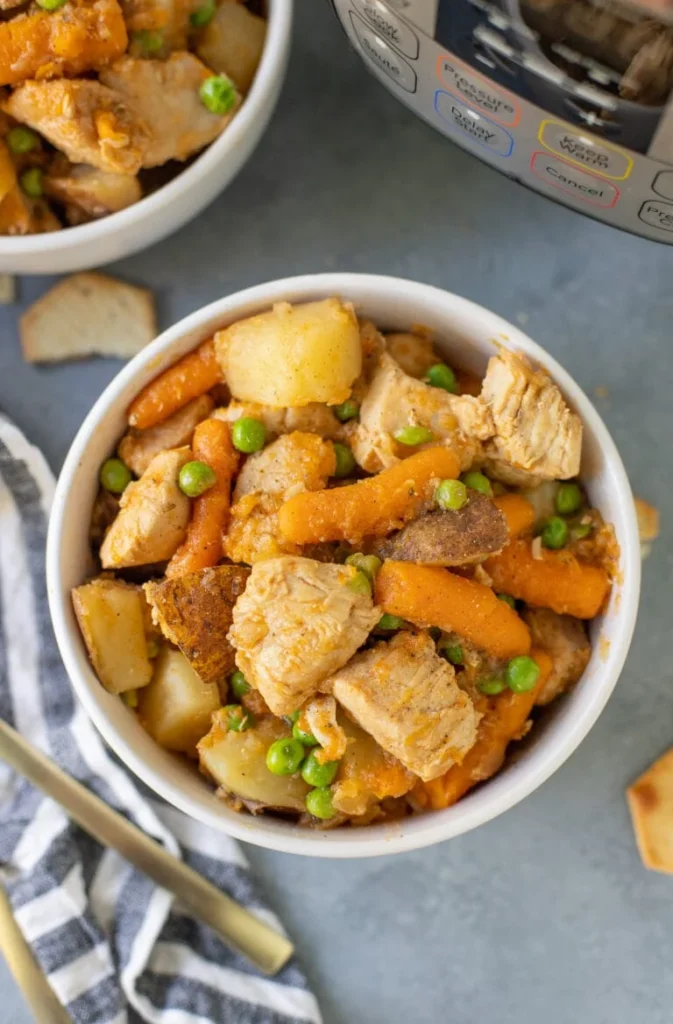
This hearty comfort meal is easy to make in the oven or on the stove. It’s rich in flavor and nutrients. Best of all, the only kitchen tool needed is an instant pot. Check out this list of 21 low sodium instant pot recipes that are fantastic easy low sodium meals for seniors.
3. Edamame Pasta
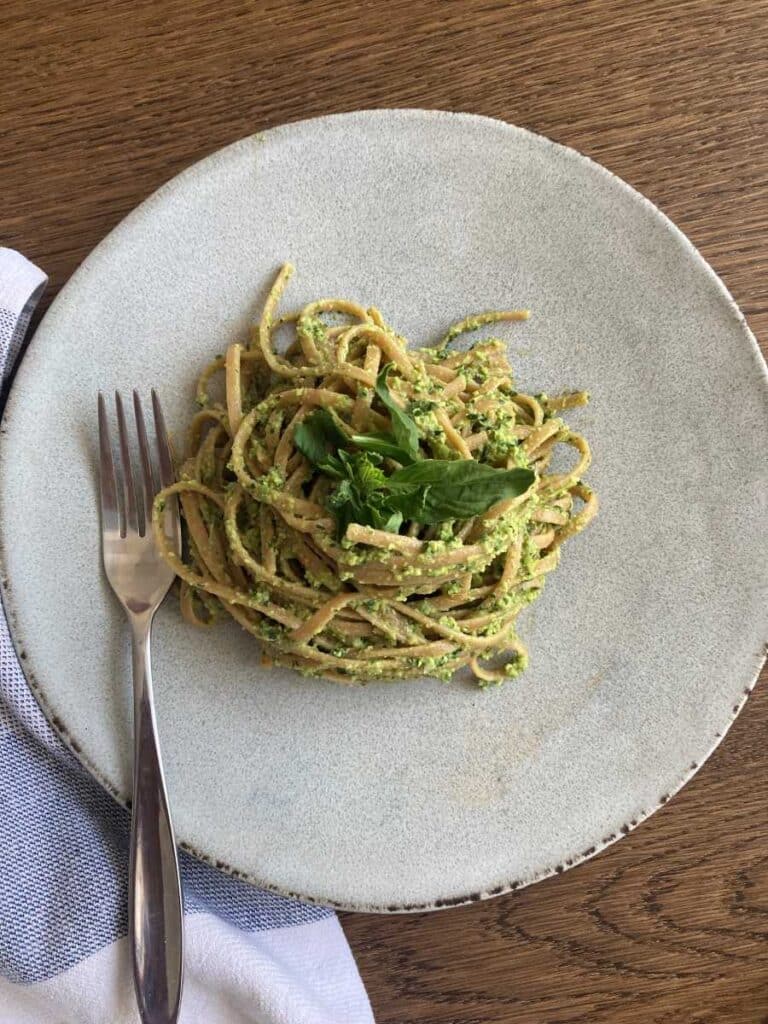
Edamame is a plant-based protein full of antioxidants that promote better blood flow (like nitric oxide!). They include healthy minerals such potassium, and taste even better when used as a sauce for pasta.
This edamame pasta sauce can be used with your noodles of choice to create a delicious, mouth-watering meal.
4. Pesto Butter Salmon (with Beans and Spinach)
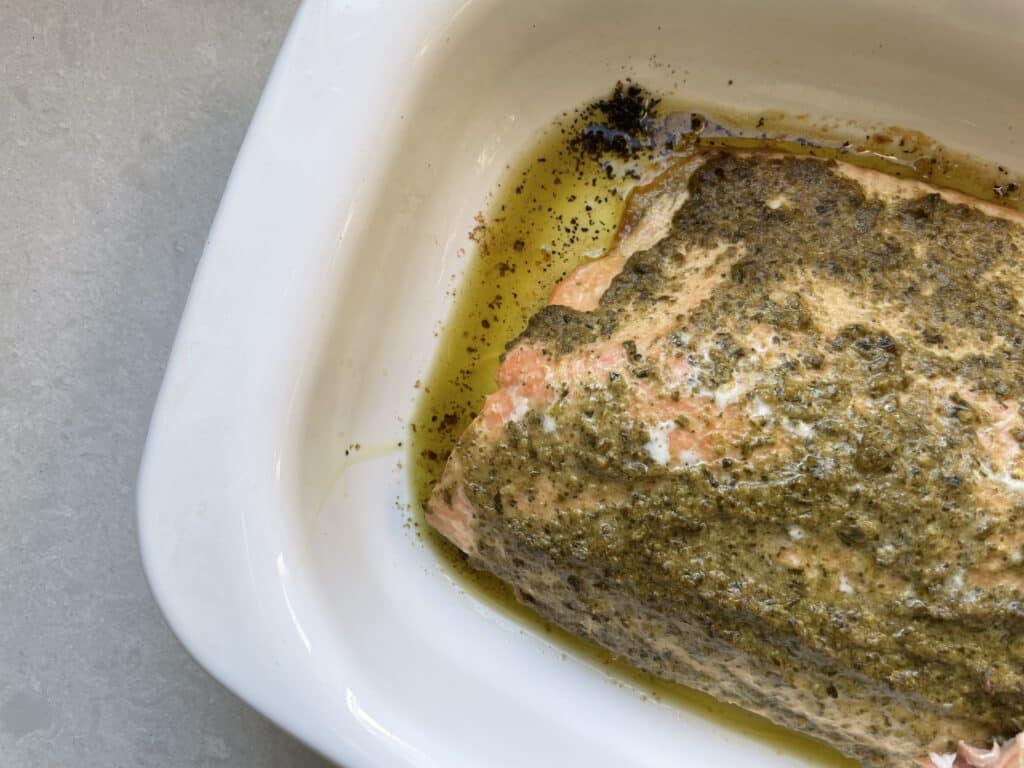
Pesto butter salmon is an easy low sodium meal for seniors that is juicy, delicious, and reduces inflammation. It also aids in controlling cholesterol, which is an added bonus.
Snacks
1. Low Sodium Popcorn
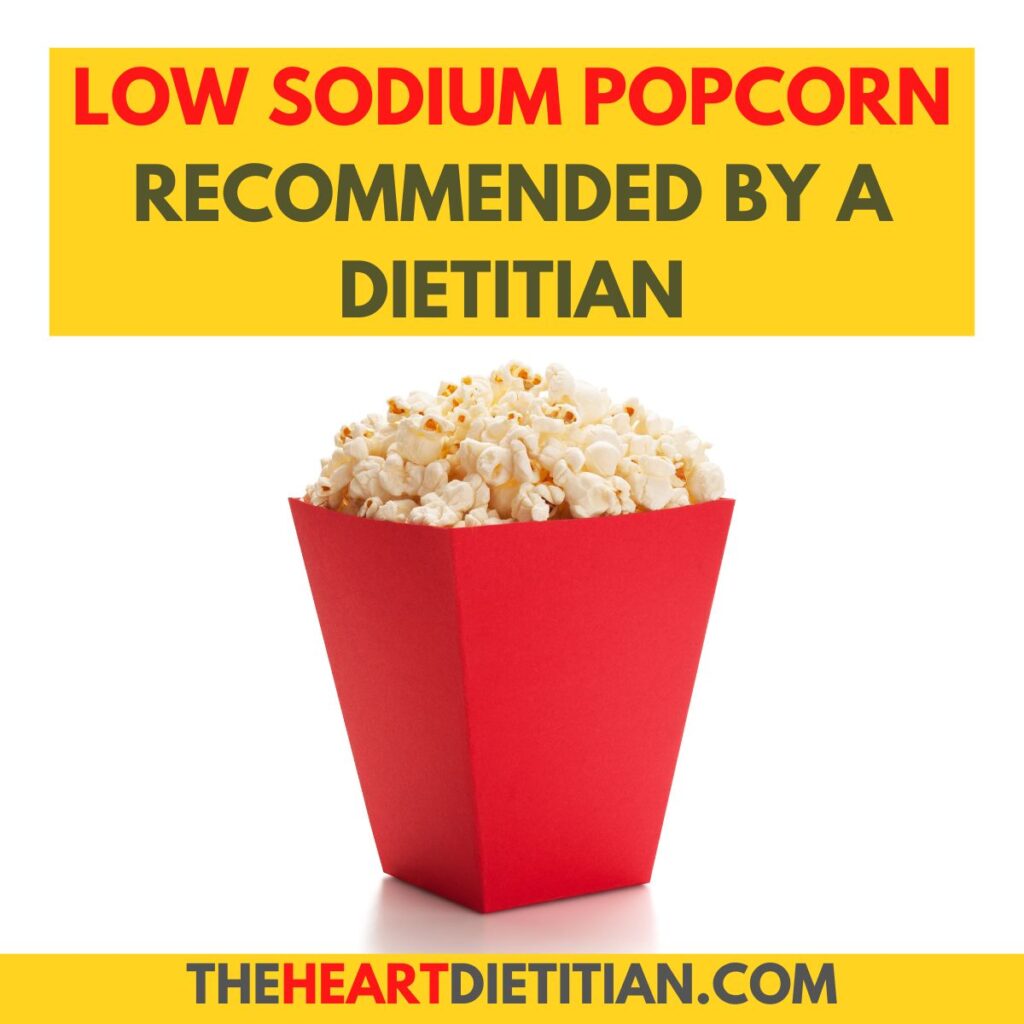
Who doesn’t enjoy popcorn when watching a movie? Well this low sodium popcorn is not only tasty, low in calories, and good for your health, but is super easy to make!
2. Low Sodium Hummus
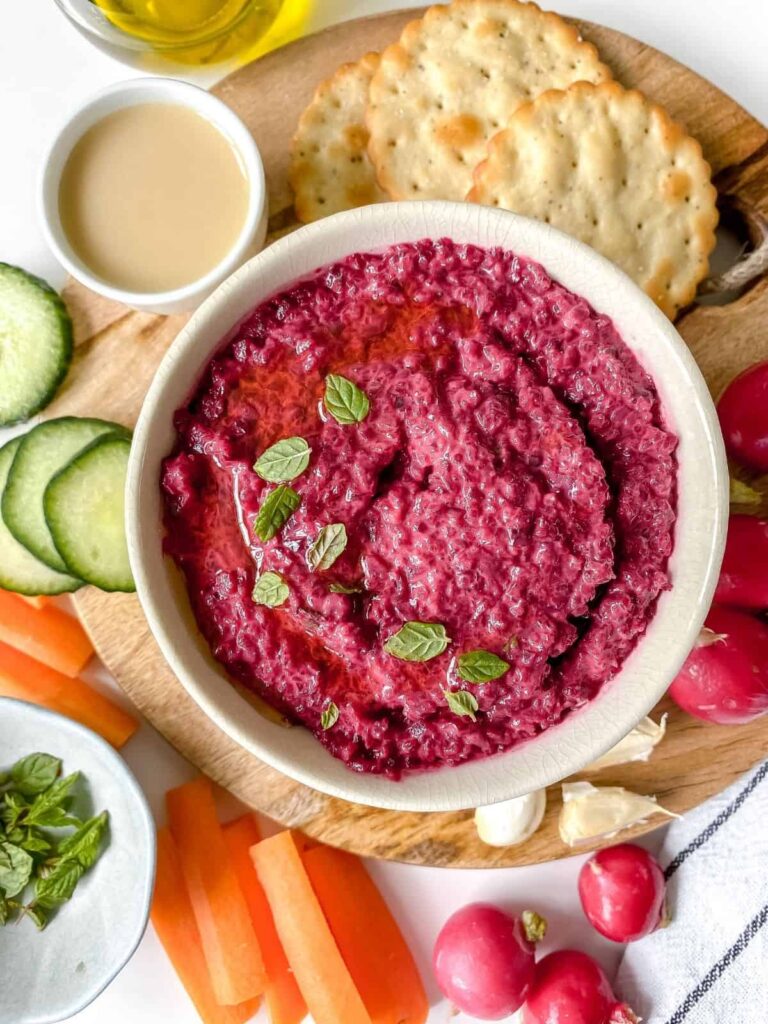
These low sodium hummus recipes are a healthy snack that is a tasty dip to be paired with pita chips, or veggies.
3. Low Sodium Salsa
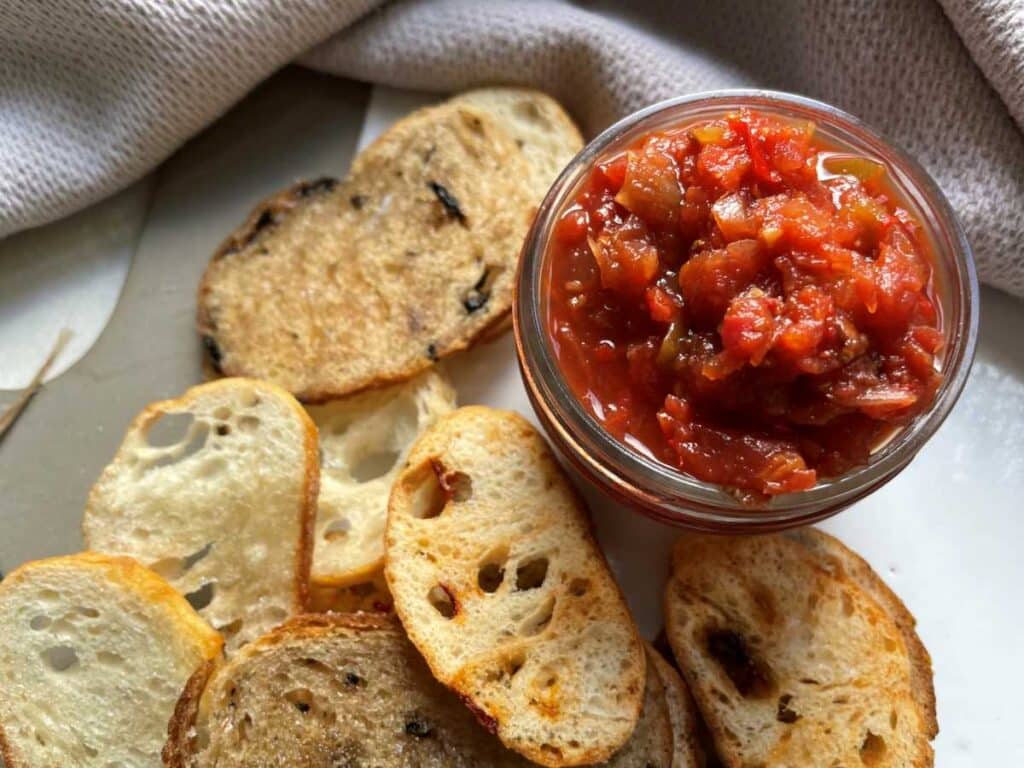
Salsa found in grocery stores is often high in salt. This healthier alternative recipe is rich in tomatoes and lowers blood pressure.
You can enjoy this sauce with your eggs, in a wrap, or use it as a dip.
Tips for Dining Out
If you do choose to go out to eat, here are some ways to make eating out low sodium too!
Tip 1: Asking for dishes without added salt
Ask your waiter or waitress to hold the salt, and ask for the condiments or sauces to be served on the side. This allows you to be in control and use them in moderation.
Tip 2: Opting for steamed, roasted, or grilled options
These foods provide a much healthier alternative to fried foods and typically involve less salt.
Tip 3: Requesting sauces and dressings on the side
Ordering sauces on the side and using them sparingly can help reduce blood pressure by moderating your salt intake.
Tip 4: Avoiding cured meats and broths
Cured meats such as bacon or sausage often have high levels of salt. The same could be said for broths, and soups. As an alternative, ask the waiter or waitress if these can be made with no salt added broth instead.
Incorporating Potassium-Rich Foods
One last tip. Instead of focusing on restricting sodium, you can add more potassium to your diet with food to control your blood pressure.
Potassium does the opposite of sodium in the body. It helps to inhibit sodium reabsorption by the kidney. Essentially, the more potassium you consume, the more sodium leaves the body. Not to mention, it helps lower blood pressure by relaxing the blood vessel walls.
Foods high in potassium include bananas, sweet potatoes, spinach, beans, avocado, oranges, tomatoes, beets, and more.
Lifestyle Changes to Complement Low Sodium Diet
Other than restricting sodium, and adding potassium to your diet, try these lifestyle changes that can complement the easy low sodium meals for seniors discussed above to manage your blood pressure.
- Staying hydrated.
- Regular exercise.
- Regular health check-ups and monitoring blood pressure.
- Eating potassium-rich foods.
- Reducing sodium intake throughout the day.
- Opt for unsalted snacks.
Final Thoughts
Remember, reducing your salt intake doesn’t mean giving up on flavor.
It’s crucial to acknowledge that satisfying, tasty meals are still within your reach. By making conscious choices, reading labels, and experimenting with other spices and herbs, you can continue to enjoy delicious meals while safeguarding your health.
Which low sodium meals for seniors are you going to try? Tell me in the comments below, or share this article with a loved one that may benefit.
This article was written by Alexandra Hussar, Nutrition Student, and Veronica Rouse, MAN, RD, CDE.

